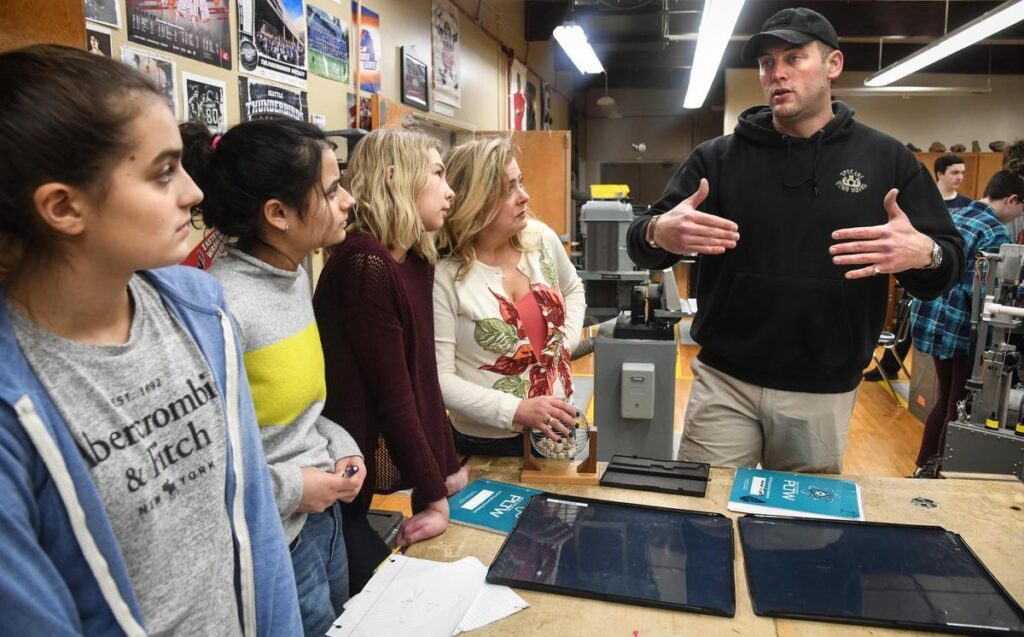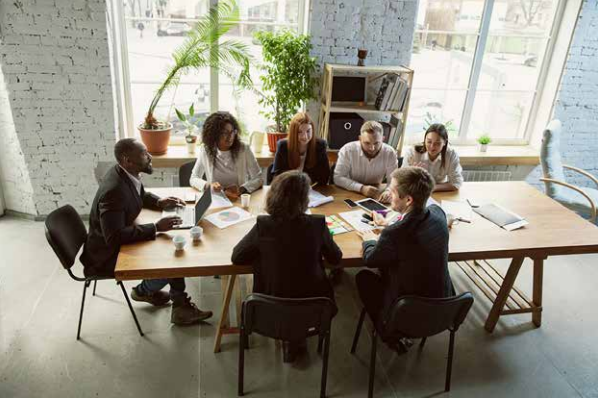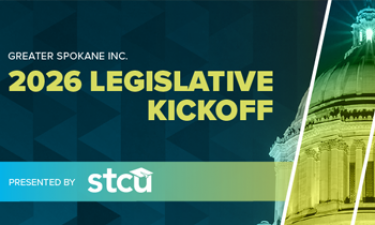By Kimberly Taylor, Engineering and Robotics Teacher, Sacajawea Middle School and Seattle University
When I stand in my classroom gazing at all the eyes looking at me, I have come to an unyielding realization. Our kids are the answer to our collective future. They come to school with more street smarts, resiliency, hardships, tenacity, and mental health issues than most generations before them. Their personal experiences and discernment of the world must always be considered. So, as a teacher, my focus has been to look ahead for the next “REAL WORLD” challenge. This almost guarantees and legitimizes the time and effort each student will put into a final project. Kids want to make a difference in the world they live in, just ask them.
Five years ago, I recognized there was a missed opportunity with our eighth-grade students. Through support from the district, I created a new class called Advanced Engineering that focused on community service projects. This class would take a group of 60 students through an arduous engineering journey. The beginning addressed real problems around us. We started by interviewing all the staff (collecting data). We then went into the community with a mindset that eighth-grade students can not only solve baffling dilemmas, but could engineer one-of-a-kind inventions that solved problems. We were on our way.

I’ve always referred to myself as a learner more than a teacher. On every occasion that I introduce a new potentially unsolvable problem I specifically say, “I am not sure how we are going to solve this problem.” I am sincere, and students can tell when I’m nervous feeling like I have bitten off more than I can chew. This emphasizes the challenge placed before us. All students learn how to use all the resources they have in class. They begin by sketching out ideas, materials, and measurements in an engineering journal and then meet as a think tank to share ideas, look for weaknesses, and create groups based on similar ideas. Then, they use Autodesk Inventor to virtually create their ideas in three dimensions. From this point, they decide which tools are needed to create their working prototype. Having a woodshop, soldering stations, painting room, laser cutters, and 3-D printers available gives students the opportunity to find what they need to begin their builds.

Why is this class so important? Students learn all the 21st-century skills used in industry today. They learn how to successfully determine which tools they need for a job, how to correctly use the tool, and teach others how to use it. They’re immersed in geometry, material sciences, English, precise measurement, and research. Students get an opportunity to work with different organizations and companies that have rigid requirements and time constraints. These connections give them a glimpse into what a real job is like; However, the most important thing to me is them getting an opportunity to work with children and adults who have a real life-threatening or severe disability. Their focus is off themselves and instead on a situation they can solve. We have worked with the Los Angeles FBI, Seattle, and Spokane Bomb Squads. La Joya Child and Family Development, Ronald McDonald House Charities, Shriners Hospital, Children’s Hospitals, Friendchips, and other Nonprofit organizations.

If your business or organization would like to get involved, contact Kimberly Taylor at [email protected].
Thank you to our partner for this project, The Spokane Journal of Business. View the full GSI Connect Magazine here.




